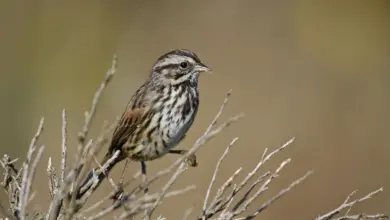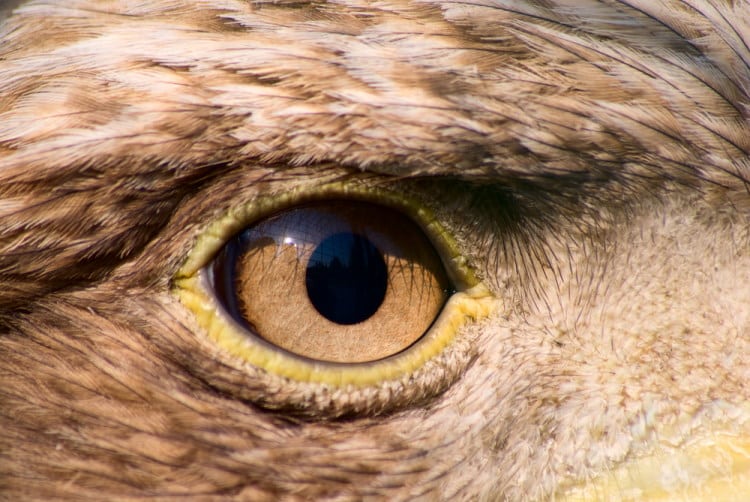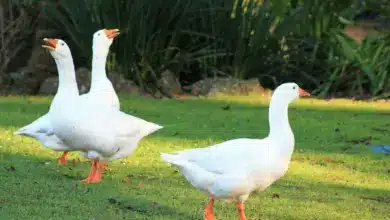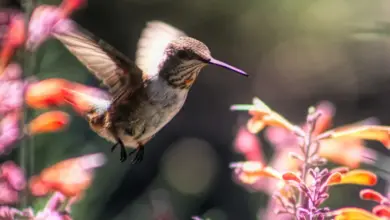Starlings are small to medium-sized passerine (perching) birds. Many Asian species, particularly the larger ones, are known as mynas.
Introduction
Starlings, the genus Onychognathus, is a vast species of birds admired for their outstanding adaptability, striking appearance, and intriguing lifestyle. From the shouting heights of the Middle Eastern open areas to the flaming jungles of Africa, these bird heritages have inspired bird lovers and ornithologists.
The present article, for instance, discusses these fascinating birds’ biology, distribution, ecology, and importance to the natural world. It aims to unravel some of the riddles surrounding the birds.
Distribution / Range
Starlings occur naturally in the Old World, from Europe, Asia, and Africa, to northern Australia and the islands of the tropical Pacific.
Several European and Asian species have been introduced to these areas as well as North America, Hawaii, and New Zealand, where they generally compete for habitat with native birds and are considered to be invasive species.
These sociable birds are usually seen in flocks.
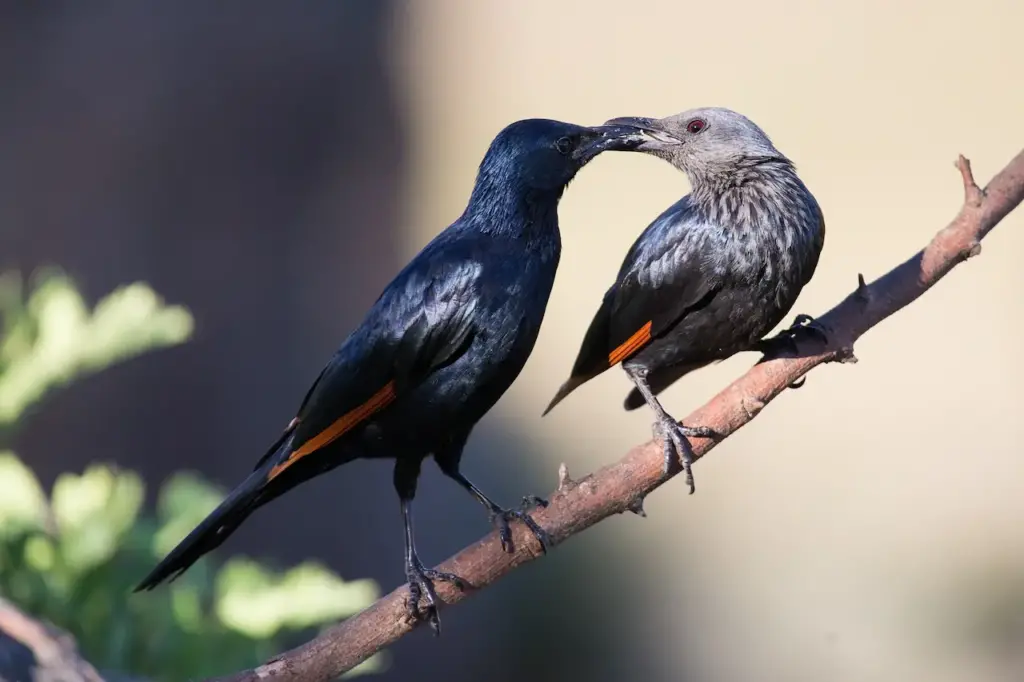
Interesting Yearly Event
In the fall, after having migrated from Russia and Scandinavia to escape frigid weather conditions, thousands of starlings gather in shape-shifting flocks called murmurations, apparently “dancing in the twilight” above England and Scotland.
Scientists can’t explain this behavior. These murmurations are manifestations of swarm intelligence. Even complex algorithmic models couldn’t explain the starlings’ aerobatics.
Description
Their plumage is typically dark with a metallic sheen.
The size and weight vary greatly by species.
The shortest-bodied species is Kenrick’s Starling (Poeoptera kenricki) at 6 inches (15 cm). The largest starlings are the mynas (genus Mino) – in particular the Yellow-faced (Mino Dumont) and Long-tailed Mynas (Mino kreffti). These mynas can exceed 1 foot (30 cm) and weigh over 8 oz (225 grams).The lightest-weight species is Abbott’s Starling (Poeoptera femoralis), at 1.2 oz (34 grams).
They have strong feet and their flight is strong and direct.
Species and Distribution
Red-winged Starling, Onychognathus morio
Range: Eastern Africa from Ethiopia to the Cape in South Africa
Slender-billed Starling, Onychognathus tenuirostris
Range: Africa, specifically from extreme south-central Eritrea south to central and southern Ethiopia; eastern Democratic Republic of Congo, southwestern Uganda, Rwanda, and Burundi; west and central Kenya, northeastern and southern Tanzania and northeastern Zambia and northern Malawi
Chestnut-winged Starling, Onychognathus fulgidus
Found in Africa: Angola, Benin, Cameroon, Central African Republic, Republic of the Congo, Democratic Republic of the Congo, Ivory Coast, Equatorial Guinea, Gabon, Ghana, Guinea, Liberia, Nigeria, Sao Tomé and Principe, Sierra Leone, Sudan, Tanzania, Togo and Uganda.
Waller’s Starling, Onychognathus walleri
Found in Africa: Burundi, Cameroon, the Democratic Republic of the Congo, Equatorial Guinea, Kenya, Malawi, Nigeria, Rwanda, Sudan, Tanzania, Uganda, and Zambia.
Somali Starling, Onychognathus blythii
Found in Africa: Djibouti, Eritrea, Ethiopia, and Somalia, as well as in the adjacent Yemen located on the Arabian Peninsula in Southwest Asia.
Socotra Starling, Onychognathus frater
Range: Yemen on the Arabian Peninsula
Tristram’s Starling, Onychognathus tristramii
Range: Israel, Jordan, northeastern Egypt (Sinai Peninsula), western Saudi Arabia and Yemen
Pale-winged Starling, Onychognathus nabouroup
Found in Africa: Angola, Botswana, Namibia and South Africa.
Bristle-crowned Starling, Onychognathus salvadorii
Found in Africa: Ethiopia, Kenya, Somalia and Uganda.
White-billed Starling, Onychognathus albirostris
Range: African countries: Eritrea and Ethiopia.
Neumann’s Starling, Onychognathus neumanni
Found in Africa: Sahel from Mauretania and Equatorial Guinea to western Sudan.
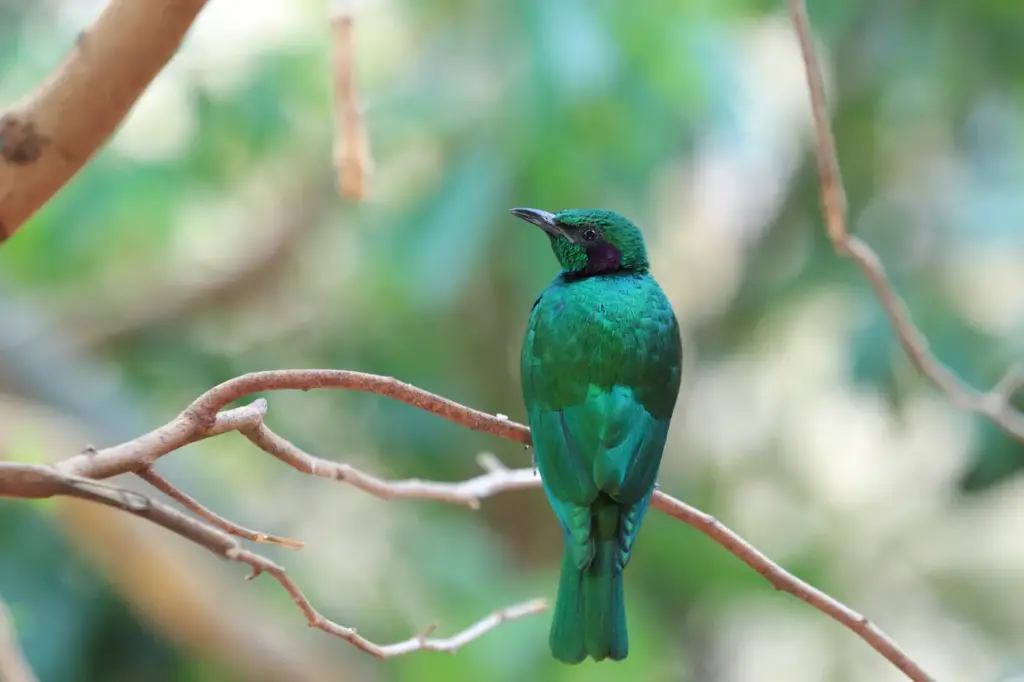
Taxonomy and Classification
Starlings, or the genus Onychognathus, are members of the Sturnidae family, comprised of various passerine birds. Onychognathus is unique in its family due to its robust conical bills, remarkable plumage differences, and intricate social activities.
The taxonomy of Starling has undergone a metamorphosis over the years, which were earlier classified as different genera and now come under a genus called Onychognathus. One of the seen stars is the Pale-winged Starling (Onychognathus nabouroup), then there is the, and, finally, there is the Cape Starling (Onychognathus capensis).
Gene mapping studies gave some clear views on genetic diversity and phylogenetic characteristics of the species belonging to the genus, and provided some answers on evolutionary connections as well.
Even with taxonomic changes, scientists are still debating and researching how to classify starlings best to understand their genetic variety and evolutionary history better.
Taxonomists want to understand the intricacies of Onychognathus taxonomy through more investigation and study, which will illuminate the evolutionary processes that have molded these fascinating birds.

Physical Characteristics
The genus Onychognathus contains starlings that are easily recognized and visually attractive due to their great range of morphological traits. One noteworthy characteristic is their plumage, which exhibits a broad range of colors and patterns.
Many species exhibit these colors, especially those with blue, green, and purple iridescence on their heads, wings, and tails. Others include striking black-and-white contrasts frequently enhanced by vibrant orange, red, or yellow patches.
Starlings are distinguished by their vivid plumage and robust, conical bills, which are an excellent fit for their omnivorous diet. Thanks to their bills, they can effectively split open seeds, search for insects, and consume a wide range of fruits and berries. They can easily hold onto trees and rough surfaces because of the sharp claws on their powerful legs and paws.
In addition, starlings have smooth, streamlined bodies that allow for quick and easy flight and maneuvering.
Their short, pointed wings allow them to move quickly and precisely when flying and foraging. All things considered, starlings’ physical attributes demonstrate their flexibility in adjusting to various environments and ways of life, making them an intriguing research topic for both ornithologists and birdwatchers.
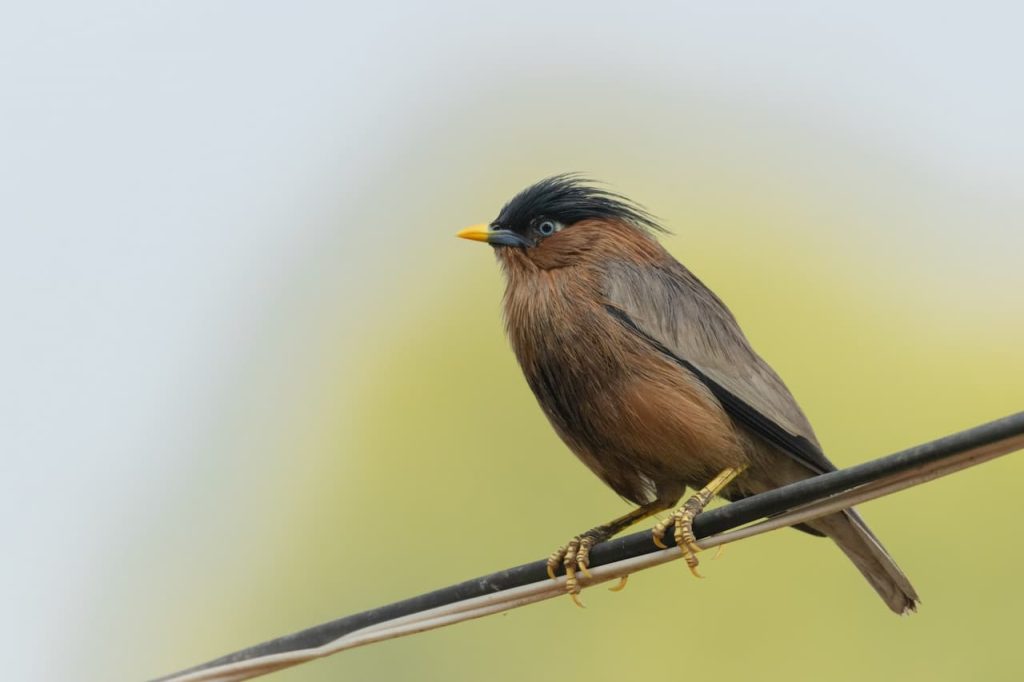
Diet / Feeding
They are typically seen foraging in open country, feeding on various insects and fruits.
Several species – that live around human habitation – are quite omnivores.
Many species search for food by opening the bill after probing it into dense vegetation.
Calls / Vocalizations
Their vocalizations are diverse and complex. They are well known for embedding sounds from their surroundings into their calls, such as car alarms and even human speech patterns.
Distribution And Habitat
Within the genus Onychognathus, starling distribution and habitat preferences are variable, demonstrating the species’ resilience to various environmental circumstances. Most of these birds are located in sub-Saharan Africa, while certain species are also found in the rocky regions of the Middle East.
Onychognathus species are found across Africa in various environments, including grasslands, savannas, open forests, and semi-arid areas. They nest in cliffs, rocky outcrops, and escarpments because they are especially well-suited to rocky environments. Because they prefer rocky settings, starlings have evolved unique habits and adaptations that enable them to flourish there.
Some species are unique to particular areas, such as the rough highlands of southern Africa; one such species is the Pale-winged Starling (Onychognathus nabouroup). Some species, such as the Red-winged Starling (Onychognathus morio), are more common and may be found in a wider variety of environments, such as rich riverine forests and dry scrub land.
Starlings live in comparable rocky environments throughout the Middle East, including wadis, cliffs, and mountain slopes. They are frequently connected to untamed environments with rocky substrates and little flora.
Overall, the range and preferred habitats of Onychognathus species demonstrate their adaptability to various environments, from the rocky highlands of the Middle East to the sun-baked plains of Africa. This adaptation highlights the birds’ tenacity in environmental difficulties and emphasizes how crucial it is to protect their habitats for coming generations.
Behavior And Social Structure
As members of the Onychognathus genus, starlings are gregarious birds with intricate social systems and complicated behaviors. They frequently form enormous flocks of hundreds or even thousands of individuals outside the mating season.
The birds are better equipped to seek food sources and are protected from predators by these groups. These flocks’ combined movements, called murmurations, are a captivating exhibition of coordinated flying patterns with practical and artistic uses.
Starlings are territorial creatures that guard their nesting locations from outsiders throughout the mating season. Intricate ritualized motions, posturing, and vocalizations are all part of courtship displays. Males frequently also showcase their brilliant plumage during these displays.
After pairing up, they collaborate to build nests in tree cavities, rock cracks, and other appropriate spots. A high degree of parental collaboration and involvement is shown by both parents caring for the young and incubating the eggs. These social activities facilitate starling communities’ success and general cohesiveness in their native environments.
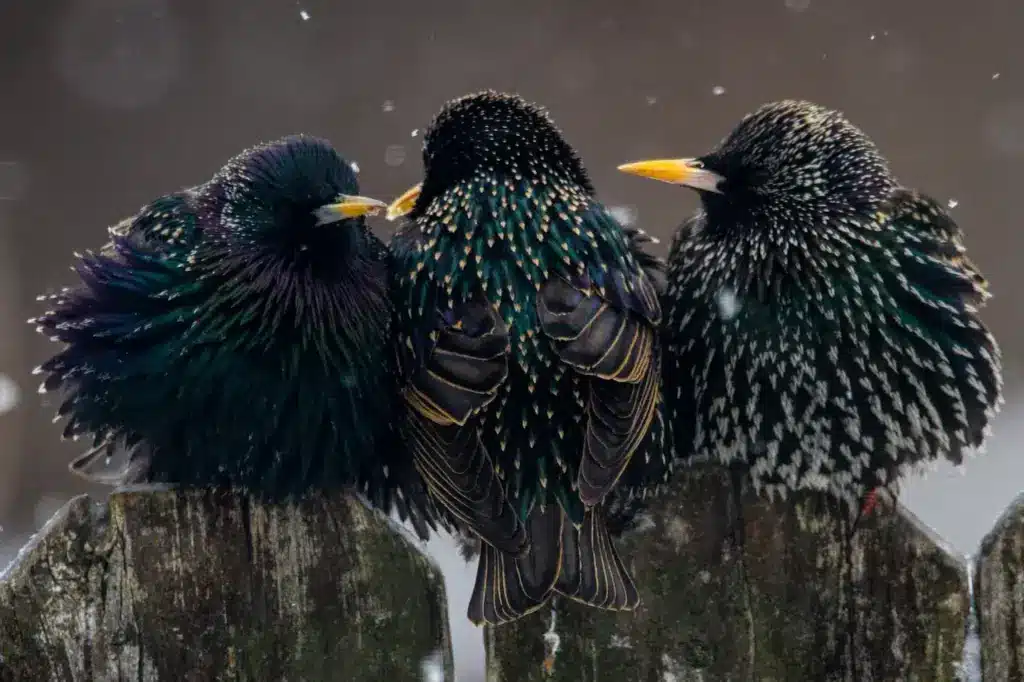
Breeding And Reproduction
Among Onychognathus species, breeding and reproduction entail complex courtship displays, usually started by males to entice possible mates. Aerial acrobatics, vocalizations, and visual clues such as displaying colorful plumage are frequently used in these presentations. After mating, the female usually builds a nest in a tree hollow or a crack in the rock, where she deposits a clutch of eggs.
Both parents tenderly tend to the nestlings when the eggs hatch and tirelessly incubate them. Until they fledge and become independent, the nestlings are given a diet of insects and food that they regurgitate. Mating partners work together to guarantee their young’s survival and growth, which helps maintain the stability of starling populations in their many environments.
Ecological Significance
Ecological Significance: Onychognathus starlings are essential to preserving the equilibrium of the environment. Being omnivores aids nutrient cycling, seed dispersal, and insect population control. Their foraging practices help to manage insect populations, which is advantageous for agriculture and the well-being of the forests.
Furthermore, their nest sites support biodiversity by serving as a haven for various creatures. They may, nonetheless, occasionally face competition for resources from native species, underscoring the intricate ecological processes in which they are involved. Starlings play a crucial role in the resilience and overall health of their ecosystems.
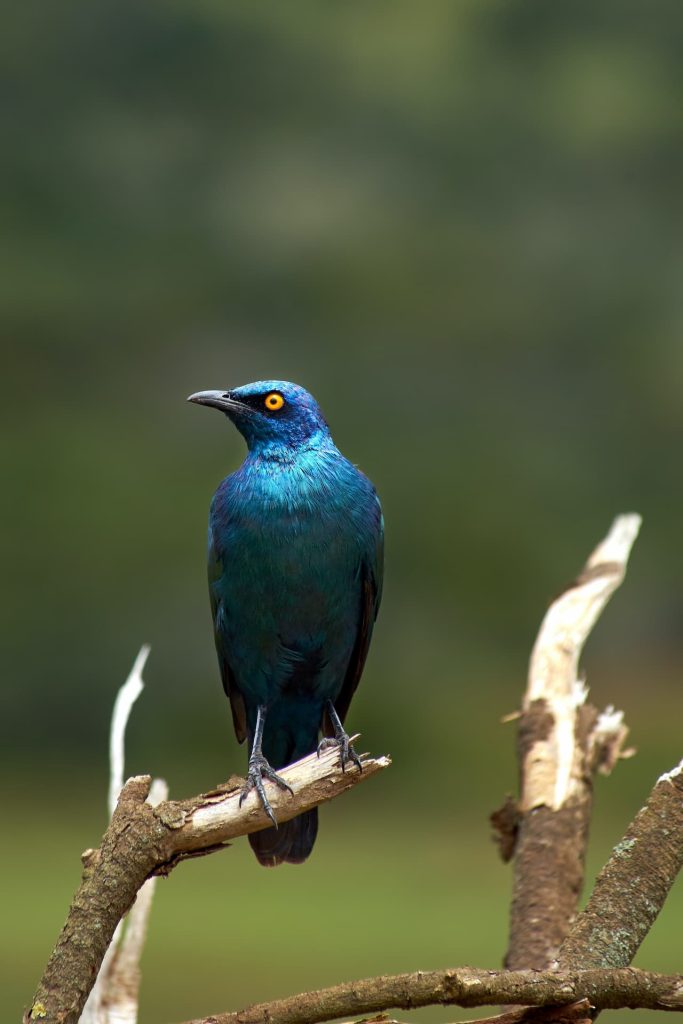
Conservation Status And Threats
Onychognathus species have different conservation statuses; many are threatened by habitat loss, climate change, and human disturbance. Their existence is severely hampered by urbanization, agricultural growth, and deforestation, especially in fragmented habitats.
These risks are made worse by the illegal capturing of animals for the pet trade and the hunting of agricultural pests. Research, education, and habitat protection are the main focuses of conservation efforts to ensure these iconic birds’ long-term survival. By tackling these issues, We can ensure that starlings in the wild are around for future generations.
Conclusion
Starlings are a wonderful example of bird life’s richness, variety, and tenacity throughout Africa and the Middle East. Because of their fascinating habits, beautiful plumage, and ecological value, these iconic birds and the environments they depend on need to be preserved.
Understanding and valuing these mysterious animals helps us better understand the complex web of life that supports our world’s biodiversity. Our duty as guardians of the environment is to ensure that future generations will still be amazed by the sight of starlings flying over the heavens.

